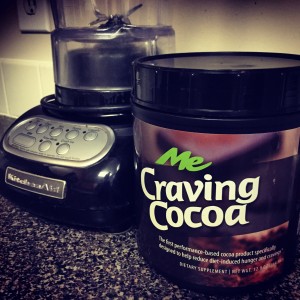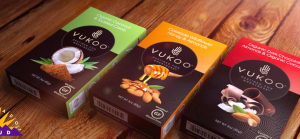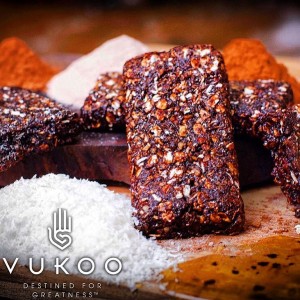Are you stuck in the throws of the deprive-binge cycle in terms of your addiction to sweets, tired of feeling tired or just plain ‘blah?’ If insatiable cravings for sugar and sweets permeate your everyday, you’ve landed in the right place. In this post, I am will outline for you my tried and true ‘Sugar Solution.’
While sugar addiction manifests differently for everyone, here are a few indications that sugar does not agree with your body:
- Increased body fat (lbs and/or inches)
- Gut symptoms, poor digestion
- Skin issues
- Wonky energy (insulin coma, blood sugar crash or sugar high)
Before we get started, I want to be very clear: while I feel absolutely zero need to justify myself and my beliefs, I do want to preface this post by saying that this is not intended as an attack on the challenge groups, XX-day detoxes, fixes or the individuals leading them. In fact, I think it’s really great that so many people have committed their lives to helping others. And so, if those things have worked and continue to work for you, zero judgment. But in my experience, both personally and professionally, these quick-fix approaches are Band-Aids for what I consider to be multi-dimensional problems. One would logically postulate then, that a multi-dimensional problem be matched with a multi-dimensional solution.
*Quickie point of clarification: #FoodObsession, dieting (binging and restriction/deprivation), disordered eating, eating disorders and/or food addiction are not just food problems. These issues, while related by food, may manifest behaviorally but so often have complex psychological roots. Yes, I’m going mindset on you. #sorrynotsorry These issues require that we dig deeper, introspect and uncover the emotional anchor that is holding us back from embracing the process fully. Only then can we trek onward.
Why waste your finite time and energy to attempt to “fix” what really isn’t a food problem when YOU could redirect that focus to work toward actually creating that multi-dimensional solution: the perfect for YOU plan aka lifestyle that you can do effortlessly, forever and with results?
If you’re still with me, open and ready to a new, more moderate approach to ditch your sugar cravings for good, thanks for hanging around. Now, roll up your sleeves and get ready to do work. I never said it was easy, but remember, easy is earned.
Whew! That could’ve been a post in itself, but without further adieu: My Top 14 Tips to Say ‘Sayonara‘ to Sugar for Good:
- Cut the crap. Real food has sugar (carb), fat and calories. As such, if your diet is laden with sugar-/fat- and/or calorie-free products and void of the former, chances are it could use some cleaning up. Sure, we may use these products in the “attain” phase of fat loss. Or, in an effort to “save” cals for later on those things we know do not align with our health/wellness intentions; those foods that do not make us feel good, physically or mentally, while we’re eating them *and* after. But then we “attain,” or let go of our self-imposed food rules and introduce thereal stuff aka the good stuff once again and we gain weight. Because while the realfood boasts a greater nutrient density than the aforementioned crap, it also has calories that the junk is [so often] void of. The reason these products are sugar-/fat-/calorie-free is because our body does not have the enzymes required to metabolize (aka digest) them. #scary If something cannot be digested, it is passed and its benefits are not reaped. What’s worse is that these toxins may very likely exert adverse effects on their way out. What’s the point in the regular consumption of something that serves zero purpose and may pose detriment to our health? An answer I have not. If you’re maintaining your weight, but still can’t say ‘no’ to sugar and sweets, hang tight. You could learn still a thing or two in the paragraphs that follow. If I’ve just described your diet and you have any interest in adopting a way of eating you can do effortlessly and with results, for life, read on…
- Preempt hunger. Consistently eating smaller, more frequent meals throughout the day will help balance hormones, blood sugar, and keep you from arriving at that ‘place’ of ravenous hunger; also insatiable cravings. Have you ever been ‘there?’ You know, that place where you want to eat ALLTHETHINGS? With this approach, your preparedness is key – whether this means meal planning, food prep and batch cooking and/or seeking out convenience options that align with your intentions, this is no one’s responsibility but your own. It requires a bit of input energy on your part, yes, but if your healthier eats are ready to go, implementation of these new, healthier habits is so much easier. This is not to say you have to eat smaller, more frequent meals versus larger, less frequent meals indefinitely, but if you’re just getting started, it’s the approach I tend to (not always) reco. How frequent is frequent? It depends. In general, I’d say ~2.5-4 hours-ish. [NOTE: This only works if your smaller, more frequent meals emphasize more of the right things, more often: protein, non-starchy produce (esp. veggies) and enough healthy fats for satisfaction (also vital for hormones and a number of physiological processes). Why? These foods are more satiating than, and offer lasting energy compared with the short-term sugar kick we experience with carb-laden, [often packaged] foods. It’s not that carbs are bad; we all need them. But, understanding our unique tipping point – timing, type and amount – is pivotal. Why? Blood sugar instability, which may be a function of too many carbs, carbs too often, the under-emphasis of fat & protein or any combination of the three. Why do we care? Less blood sugar control ===> more cravings. Carbs deserve their own post, but if you’re interested, we talk about this more here. In general, the more active you are, the more carbs you need; less active, less carbs.]
- Eat enough protein. Not eating enough protein or enough complete proteins, which contain all of the essential amino acids, can trigger cravings. Specifically, deficiency of the amino acids tyrosine, tryptophan and/or glutamine. A blood sugar stabilizer, protein satisfies more quickly and keeps you feeling fuller for longer, which makes overeating less likely. It helps maintain lean body mass (muscle) and is the building block for muscle. Basal metabolic rate, or the calories we burn at rest (i.e. doing nothing), is over 2/3 determined by lean body mass so this is something we want to preserve. Still, protein is not the end all, be all. Too much of a good thing is still, too much. Need some protein-packed ideas? Check this post.
- Prioritize produce in the form of low sweet fruits (limit to 1/day if fat loss is your primary goal) and lots of fibrous veggies. Loaded with fiber and water, these blood sugar stabilizers add bulk and offer a nutrient density to boot i.e. micronutrients (vitamins & minerals). Cruciferous vegetables (e.g. broccoli, cauliflower, brussels sprouts, cabbage and kale) are great estrogen detoxifiers, but don’t forget your greens (e.g. spinach, chard, arugula, leek greens, etc.). I am green-fiend! Don’t believe me? Check my Instagram feed.
- Drink more water. So often we mistake thirst for hunger. Hungry or craving? Chug a giant glass/bottle of water and wait 20 minutes. Still hungry? [NOTE: This is felt in the gut versus cravings, which are felt in the head] Eat a protein- and veggie-dense meal/snack. Not a water drinker? Try adding a glass before meals, or to something else in your day that is already habit e.g. upon waking, before your first cup of coffee, brushing your teeth, drive to work. Try infused water with a slice of citrus, cucumber, berries or ginger. Even better? Invest in a reusable BPA-free water bottle and keep it with you always; visible and in plain view. I love my S’well and bkr. Aim for 2-3L plain water per day, minimum. You can also try things like green tea, herbal caffeine-free tea, seltzer water (I like LaCroix) and/or kombucha in addition to, but not in place of plain water. You can add stevia to your tea (see #6), but stay mindful if you’re drinking it all the time; and particularly if you’re still actively struggling with cravings. There’s nothing wrong with it, and it’s perfectly safe, but it’s just the whole teaching yourself to expect all sweet all the time. Read your labels for seltzer water and kombucha; not all are created equal.
- Eat more fat. You’ve heard it before and I’ll say it again: eating fat does not make you fat. In fact, fat by itself has a relatively neutral insulin response when compared with carbohydrate, protein or worse, carb and fat together. What makes you fat is eating too much… of anything (see #3 above). Fat is calorically dense, yes, but also hugely satiating i.e. less is required to satisfy. Consequently, used strategically and in moderation, it can help stave off hunger and cravings, sustain energy and burn fat. My favorite fats include those from grass-fed meats, wild fish, avocado, nuts & seeds, nut butter, egg yolks, EVOO and coconut oil. Find what works for YOU, and do that.
- Look for no added sugar, avoid artificial sweeteners and choose naturally sweet options. Read your labels. It’s as simple as that. Sugars are listed under carbohydrates, along with dietary fiber and sugar alcohols (when applicable). Sugar alcohols and sugar are not created equal. Digested more like dietary fiber, sugar alcohols do not raise blood sugar like sugar does. The carb-induced blood sugar spike triggers the pancreas to produce insulin and the crash that you may experience after is real. Artificial sweeteners have been shown to have negative implications for your health and waistline, but did you know that they can actually make you crave more sweet? Pay attention and choose natural sweeteners like stevia instead, but stay mindful. While healthier, these options can still be a trigger for some, and can be overdone. *Be forewarned: if your diet (and by diet I mean nutrition – what you eat day-to-day; not dieting) is sugar-saturated, you may very well experience cravings for it upon cutting back/reducing/limiting it. More on that in a sec, but know that this is totally normal. And, it does get better.
- Keep it simple. You know that my #1 food rule is to eat only the foods that you love that love you back. This takes detective work, yes, but decreasing your sugar intake need not be synonymous with bland food or food that tastes bad. Add fresh/dried herbs, spices, salts, onion, garlic, healthy oils to compliment that natural flavors of real, whole foods. And, as you decrease your sugar and overly processed stuff, you may likely develop a taste for the healthier choices, even crave them, and learn to appreciate them in their simplest state. Sweet potatoes, plantains, figs, dates… Nature’s candy, anyone?
- Be patient. The worst thing to do in response to a craving? Feed into it. Instead, practice surfing the urge, ignoring it. Easier said than practiced, at first. I get it. I do. But like with anything, the more we practice the better we get. The more attention you *give ‘it’,* whatever the ‘it’ is, the more you will crave it. But you MUST resist those cravings if you want to overcome them. And you must do it consistently over weeks, months and years if you want it to be easy, effortless aka habit. We become what we repeatedly practice. The more sweet we consume, the more sweet we crave. Period. Bottom line. *Example: Ever been around a tantruming toddler who wants something that they do not have? What happens when you give in to that which is desired for the sake of putting an end to the bad, perhaps headache-inducing behavior? You actually teach them to expect ‘it’ in response to the behavior that you are not trying to encourage e.g. screaming ===> candy, cookie, toy… whatever. In doing so, you dig yourself an even deeper grave and it becomes increasingly more difficult to break the habit each time you reward the behavior. Make sense? I think it was Pavlov and the dogs or something…
- Hone your mindset. Practice shifting your mindset from one of ‘I can’t’ vs ‘I choose not to.’ The difference in verbiage is slight, but hugely empowering. You can have anything, anytime; just not everything. Practice also shifting your focus from one of reducing cravings by indulging them to one of reducing cravings by eliminating them. Indulging our cravings is a surefire way to ensure their return. Choosing a “healthier” treat in response to a craving still feeds the craving rather than eliminate it. Healthier treats are still treats and to be enjoyed, in moderation.
- Use, but don’t abuse moderation. I wrote a whole blog post on this so I won’t rehash it here. Learn your buffers and preemptive cheats and use them, but cautiously (see #9 and this post - it’s a good one 😉 ). A dairy-, egg-, gluten-, grain- and soy-free Paleo cookie is still a cookie.
- Identify your triggers and avoid them. Triggers throw hunger, energy and cravings (HEC a la Metabolic Effect) out of balance, impede fat loss results and, when removed from the diet, fat loss resumes. Common triggers include sugar-free/zero cal sweeteners, protein shakes, protein bars, dairy, grains, nuts, fruit, soy and dairy. Obviously, not necessarily all junk foods but they may not work for YOU. Best way to know? Eliminate the trigger in question for a period, monitor, watch and see how you do. If you suspect multiple triggers, do not eliminate them all all at once or you won’t know what is causing what. Bear in mind that one person’s trigger may be another person’s buffer. Be your own detective. You are the best expert in you. #selftrust
- Prioritize sleep. Sleep deprivation impedes the body’s insulin response, which may translate to more cravings. The mental energy to resist that which we desire is also not at its highest in a fatigued state. What to do? Commit to a [reasonable] bedtime, create a routine around it (e.g. power down, herbal tea or whatever) and stick to it.
- Move. Moving and eating do not go hand-in-hand. And by movement, I do not necessarily mean exercise. Sure lifting weights, sprinting fast, metabolic conditioning, CrossFit, HIIT, etc. offer some amazing benefits. But by movement, it could be something as simple as a leisure walk (coffee or tea or Craving Cocoa optional, but highly recommend 😉 ), step outside for a breath of fresh air, foam rolling, light stretching, yoga or sauna. Can you eat while in motion? Obviously, yes; but it’s less likely. And even if you’re eating while you’re up and about, overeating is less likely.

*Don’t forget: Physiques are built over months, years of consistent practices. Your body is a reflection of the DAILY choices you make and nothing changes until you change your choices.
If you’re interested in more, check out Em’s Coaching Club. We troubleshoot cravings and more in this like-minded community of people interested in living a healthier lifestyle! How do you combat cravings? What from this post did you find most helpful? Let me know on my Facebook page!



 Experience Vukoo bars here. Enjoy!
Experience Vukoo bars here. Enjoy!

